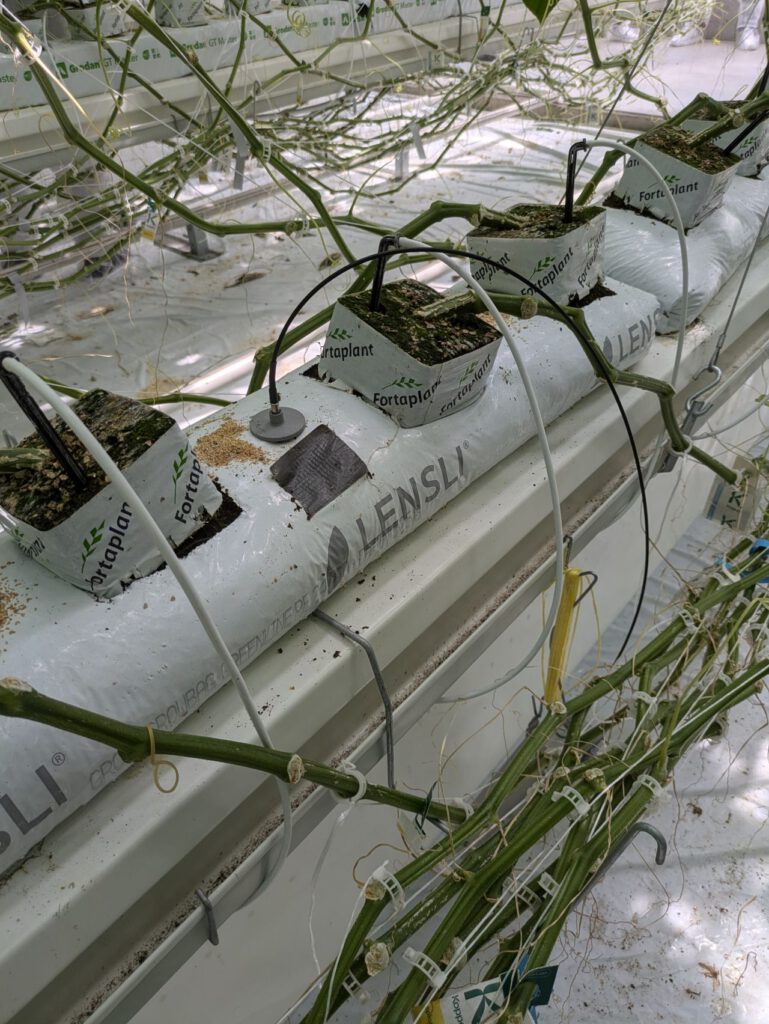In tomato cultivation, the oxygen concentration in the substrate slab plays a vital role in ensuring healthy plant growth and optimal yield. A stable oxygen supply to the roots is crucial for plant respiration. Preventing oxygen deficiency requires a carefully tuned irrigation strategy.
At an innovative tomato grower (Merlice), opportunities were explored to optimize crop health and cultivation efficiency. The grower chose to closely monitor the growing environment using photosynthesis and oxygen sensors. This technology makes it possible to track key indicators that are essential for proper root function and overall plant health. The study revealed that oxygen-deficient periods occurred due to limited drainage within the substrate slab. In the days that followed, fluctuations in oxygen levels were observed, providing crucial insights into the relationship between irrigation and plant activity.
Analysis of oxygen levels in the substrate slab
The detailed graph of oxygen levels over a period of several days shows a pattern that can be explained by the irrigation schedule in combination with plant activity.

– July 20/21: The oxygen concentration in the substrate slab drops to zero, caused by limited drainage within the slab. This indicates that the oxygen supply at that time was insufficient to support root respiration. This period without oxygen likely had a negative impact on root health.
– July 22: The oxygen-depleted period is shorter, and drainage within the slab improves, indicating potentially better conditions for root respiration. This may be related to an adjustment in the irrigation strategy.
– July 23 and onwards: For the first time, the oxygen concentration no longer drops to zero, which is a positive sign. It appears that an improvement has occurred in the balance between irrigation and the plants’ uptake capacity. This results in a more stable oxygen supply to the roots and contributes to healthier plant development. In the following days, oxygen levels return at higher values, and the low-oxygen periods are shorter or even absent. The trend is upward.
Recommendations for improvement
Managing oxygen levels in the substrate for tomatoes requires adjustments to the irrigation strategy. Based on the observations from the graphs, the following recommendations can be made:
- Optimize irrigation frequency: Ensure a fine-tuned irrigation strategy with more frequent, shorter watering intervals.
- Closely monitor oxygen and moisture levels: By using real-time sensor technology for oxygen, fluctuations can be quickly detected and oxygen-deprived periods can be prevented.
- Adjust irrigation based on weather changes: Warmer days with high light intensity and colder days with low light intensity both have different effects on drainage and the associated oxygen levels. It is essential to adapt irrigation accordingly to prevent both slab dehydration and oxygen deficiencies in the root zone.
Conclusion
Accurate monitoring and adjustment of irrigation are crucial for healthy and productive tomato cultivation. The fluctuations in oxygen concentration show that an imbalance between irrigation and plant activity leads to oxygen deficiencies and reduced root health. By dynamically aligning irrigation with plant activity and environmental conditions, the oxygen supply to the roots can be optimized, resulting in improved growth and higher tomato yields.
